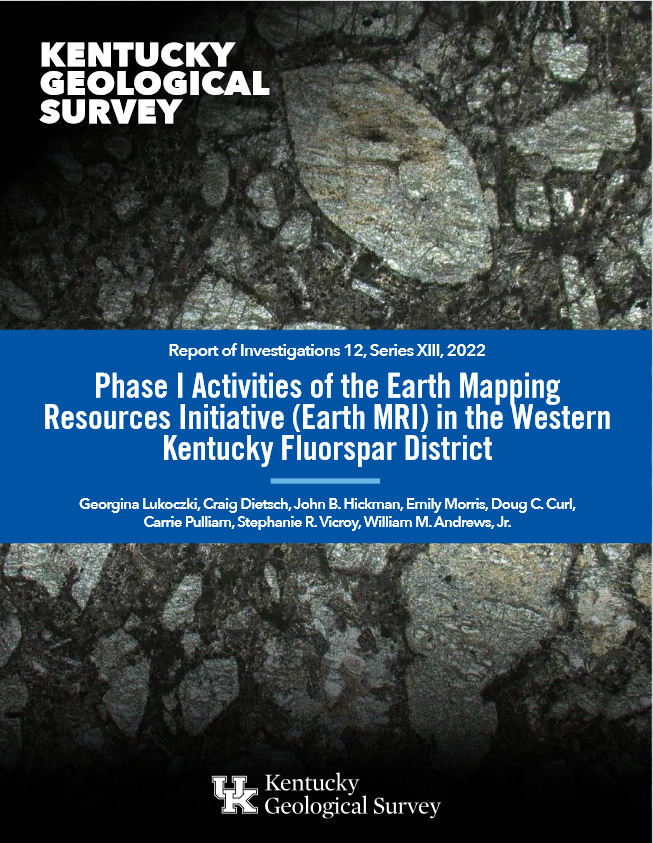Critical Mineral Research for Sustainability
A challenge for the energy transition away from fossil fuels is the limited supply of critical minerals needed for advanced technology that cannot be fulfilled by recycling alone. Part of this challenge is the very low probability of success for finding economic mineral deposits. A key to sustainable mineral exploration is the application of the holistic mineral systems approach, which improves our understanding of the processes that lead to the formation of economically viable deposits, thus increasing the probability of success. The U.S. Geological Survey has developed a mineral system framework for the U.S., which forms the basis of the critical mineral research at the Kentucky Geological Survey. Initial goals are to identify and characterize the components of each mineral system that has the potential to host critical minerals in Kentucky.
Dr. Lukoczki’s critical mineral research has been supported by multiple grants from the USGS through the Earth MRI and Data Preservation programs.
Earth MRI Project Highlights
-

Rare Earth Elements in Ultramafic Lamprophyres
The ultramafic lamprophyres of the Illinois-Kentucky Fluorspar District (IKFD) are potential domestic sources of rare earth elements (REEs), but the role of mantle metasomatism and carbonate alteration in REE distribution is not well understood. Dr. Lukoczki’s team has employed petrographic and geochemical analyses to determine the nature of the mantle source region and timing of the carbonate mineralization. Carbonate alteration, including listwanitization and ophicalcitization, appear to play a secondary role in REE distribution. For details, find Zach Walton’s thesis here.
-

Critical Minerals in Mississippi Valley-type Mineralization
Kentucky hosts significant occurrences of fluorite, sphalerite, galena, and barite, concentrated in three key areas with historical production. In western Kentucky, part of the Illinois-Kentucky Fluorspar District, mineralization is linked to ultramafic intrusions, with notable germanium content in sphalerite. Southcentral Kentucky features sphalerite-dominated deposits similar to the Middle Tennessee Mines, with ongoing studies to assess germanium content. Central Kentucky, historically known for barite production, is the focus of a new Earth MRI project targeting critical mineral potential. Geochemical studies, combined with high-resolution USGS geophysics, will provide critical insights into the genesis and exploration potential of Kentucky's mineral systems.
-

Ordovician Phosphate-bearing Carbonate Rocks
Sedimentary phosphate deposits are potential sources of rare earth elements (REEs) with the capacity to meet global demand. However, the processes influencing REE incorporation and distribution in these rocks—such as depositional environment, ocean chemistry, and post-depositional alteration—are not fully understood. The Ordovician Lexington Limestone in Kentucky, known for contributing to phosphate-rich soils supporting the state’s equine industry, also contains REEs and uranium, posing radon-related health risks. A recently funded Earth MRI project applies crystallographic and geochemical tools to trace phosphate crystallization and recrystallization, uncovering the mechanisms controlling incorporation of trace elements like REEs and uranium in sedimentary phosphates.
